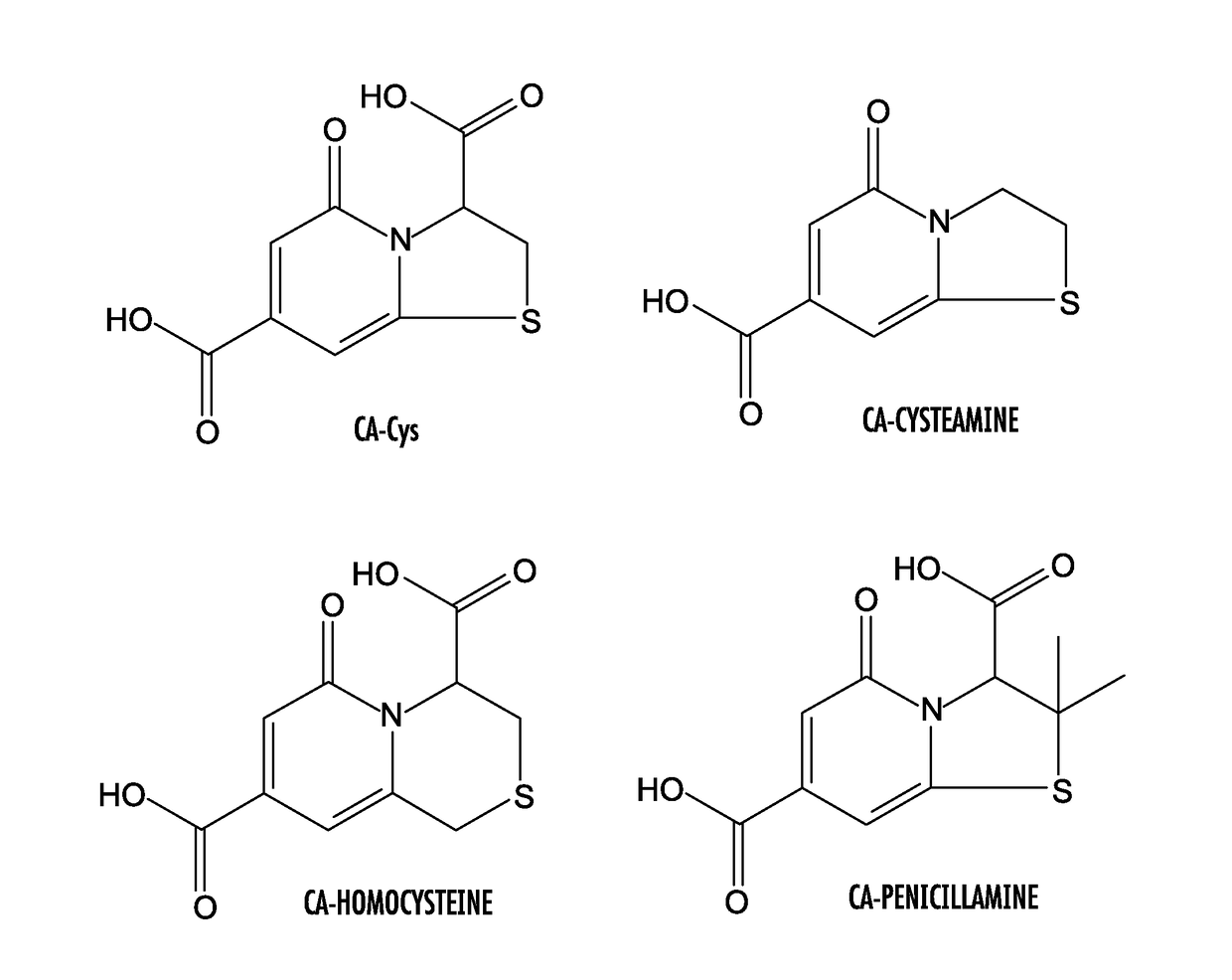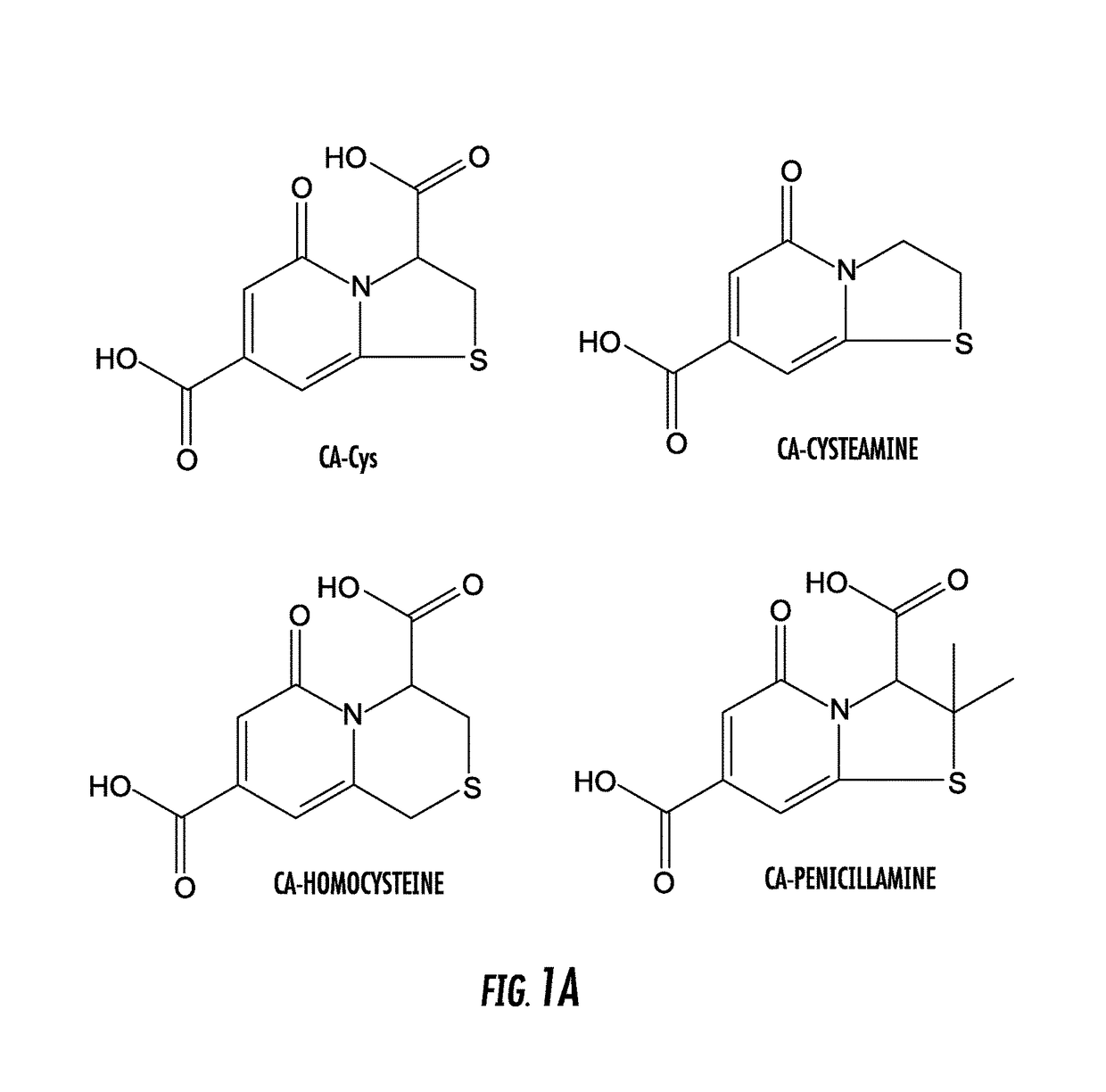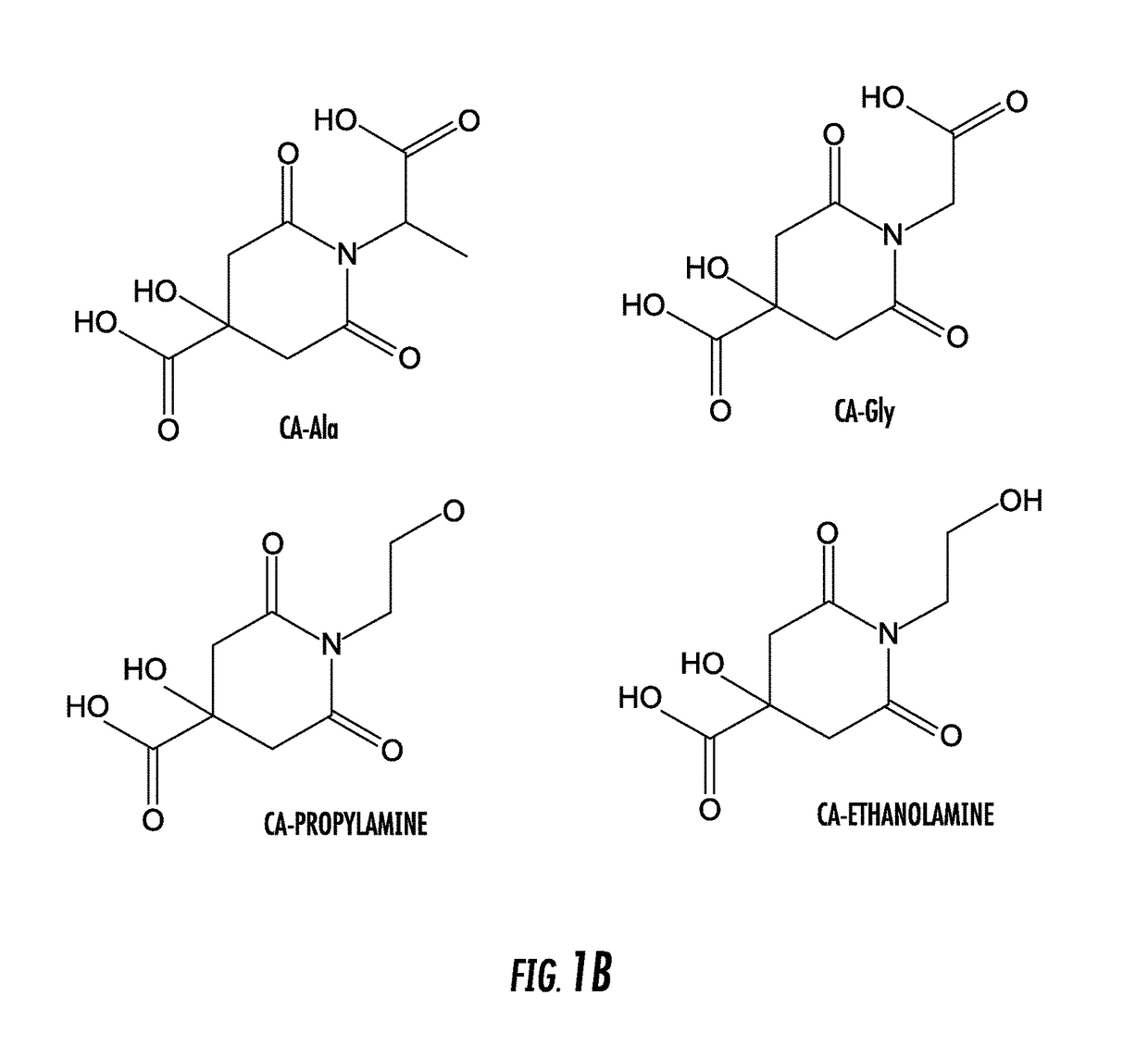Luminescent Compositions And Applications Thereof
a technology of luminescent compositions and compositions, applied in the field of luminescent compositions, can solve the problems of altering the fluorescence lifetime of fluorophores, and achieve the effect of improving the signal-to-noise ratio (snr) of imaging and reducing nois
- Summary
- Abstract
- Description
- Claims
- Application Information
AI Technical Summary
Benefits of technology
Problems solved by technology
Method used
Image
Examples
example 1
Overview of Synthesis and Characterization of Luminescent Compositions
A. Synthesis of CFDs
[0068]Citric acid (or another polycarboxylic acid or functional equivalent thereof, such as tricarballylic acid) and a primary amine compound were added into a flask at a molar ratio of about 1:1. 10 mL DI water was added into the flask to dissolve both compounds completely. The reaction was then conducted at 100-140° C. under vacuum for 2 to 4 hours. The reaction was terminated by adding 15 mL cold DI water to dissolve the products. Amino thiols were used to synthesize TPAs and other primary amines were used to produce DPRs (primary amines included amino acids (except thiol containing amino acids), monoamines, and diamines). Purification of CFDs was performed by recrystallization twice in DI water or by a Shimadzu HPLC with a C18 column and a fraction collector. Not intending to be bound by theory, synthesis routes of DPR and TPA are shown in FIGS. 2A, 2B, 3A, and 3B. Table I provides structur...
example 2
Properties of Luminescent Compositions
A. Synthesis of CFDs for Fluorescence Characterization
[0077]Two families of citric acid based fluorescent dyes (CFDs) were developed, including CFDs with a dioxo-pyridine ring (DPR) and thiazolopyridine acid (TPA). The CFD fluorophores were synthesized by a simple one pot melt condensation reaction consistent with the above description in Example 1 without the use of any catalysts or organic solvents. The resulting molecules were water soluble in addition to being soluble in organic solvents such as ethanol, isopropanol, acetone, tetrahydrofuran (THF), and dimethysulfoxide (DMSO). Photoluminescence properties and fluorescence mechanisms were then reviewed as follows.
[0078]The chemical structures of DPR and TPA were confirmed by 1H-NMR and 13C-NMR and HPLC-MS, exemplified by the CFD from citric acid and alanine (CA-Ala) and CFD from citric acid and cysteine (CA-Cys), respectively. All peaks observed in such techniques were correlated to structure...
example 3
Synthesis and Characterization of BPLPs
A. Synthesis
[0080]A series of BPLPs were synthesized from varying combinations of organic acids, amino acids, primary amines, and 1,8-octanediol (see Table III) in order to identify the fluorophores of BPLPs. (Note: all chiral molecules discussed hereinbelow are L-isomers unless specifically stated otherwise). In Table III below, compound 1 is the aliphatic acid, compound 2 is 1-8-octanediol (for all polymers), and compound 3 is a primary amine, amino acid, or analog of an amino acid. λab is the maximum absorption wavelength. ϵ is the extinction coefficiency. λex and λex are the maximum excitation and emission wavelengths. Φ is the quantum yield.
TABLE IIISummary of synthesis and photophysical properties of BPLPs.FluorophoreλexλemϵΦBandCompound 1Compound 3Structure(nm)(nm)(M−1 cm−1)(%)ShiftTCACysteine36643111.654.2YTCAAlanine3554236.10.2YSucACysteineNANANANA0NASucAAlanineNANANANA0NACAPropionic acidNANANANA0NACA3-NANANANA0NAmercaptopropionicacidC...
PUM
| Property | Measurement | Unit |
|---|---|---|
| Fraction | aaaaa | aaaaa |
| Time | aaaaa | aaaaa |
| Acidity | aaaaa | aaaaa |
Abstract
Description
Claims
Application Information
 Login to View More
Login to View More - R&D
- Intellectual Property
- Life Sciences
- Materials
- Tech Scout
- Unparalleled Data Quality
- Higher Quality Content
- 60% Fewer Hallucinations
Browse by: Latest US Patents, China's latest patents, Technical Efficacy Thesaurus, Application Domain, Technology Topic, Popular Technical Reports.
© 2025 PatSnap. All rights reserved.Legal|Privacy policy|Modern Slavery Act Transparency Statement|Sitemap|About US| Contact US: help@patsnap.com



